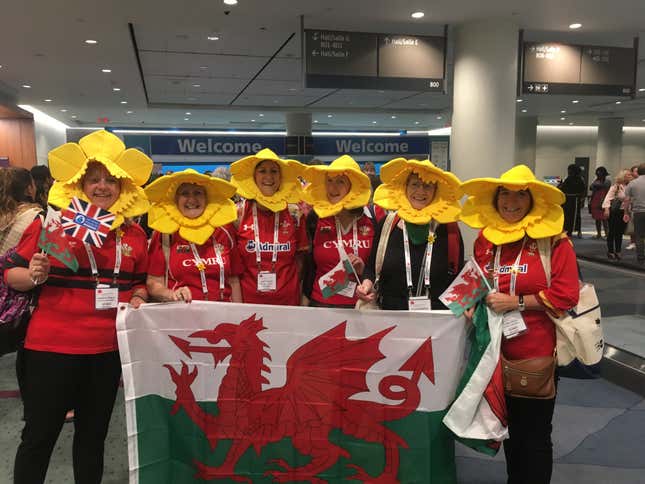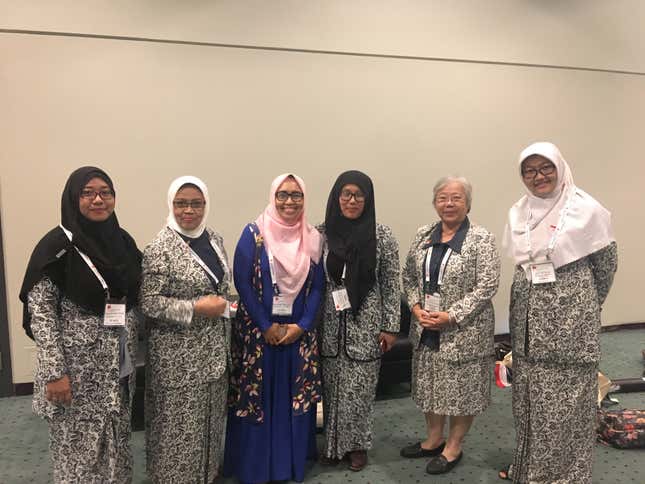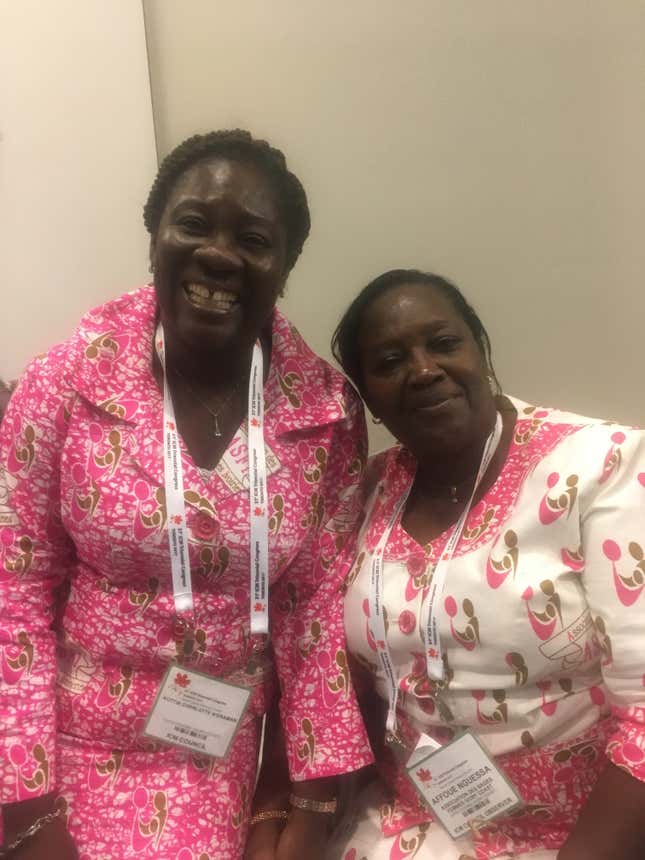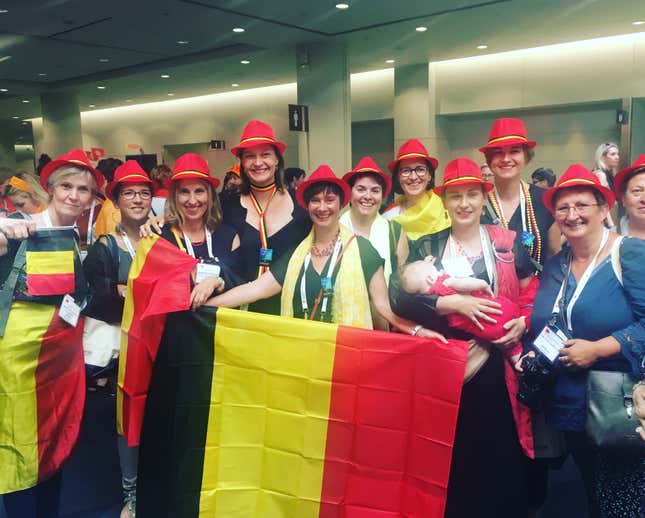My Day at the Jovial, Vital Gathering of Midwives From Around the World
Latest

Among North America’s coastal elites, midwifery has become associated with finicky preferences, rigid orthodoxy, and a commitment to doing things right. Regular folks have hospital births. Folks who want to “win” at childbirth by forgoing the epidural, or who turn up their noses at chemicals that course through one’s body during induction—they see midwives.
Midwives themselves are often associated with a philosophical rejection of medical intervention in childbirth. Many North American women feel that midwifery subjects their choices to unwavering scrutiny—you must breastfeed until your baby is a year old, you must wear your baby. But these notions are painfully ironic because outside of the contemporary Western context, midwifery isn’t and never was for elites. It’s the actual oldest profession.

On June 18, I was in Toronto for the triennial congress of the International Confederation of Midwives, a non-governmental organization that represents approximately 300,000 midwives across 114 countries. On my way there, I had made a little joke to myself—that I was heading to a gathering of friendly women in sensible shoes. In retrospect this fleeting thought embarrasses me. In many parts of the world, a midwife is the only health care provider that a woman will ever encounter. Personal style does not enter into the equation. Associating midwives—even North American midwives—with a certain aesthetic or ideology is unimaginative and, more to the point, it’s a dismissive hand in the face of the urgent and often overlooked work of providing compassionate maternal care.
The congress’s opening ceremony felt like some kind of Women’s Health Olympics; a procession of midwives wearing outfits that represent their home countries carry their national flags into a huge hall to resounding cheers. As they walked in, the countries where midwives work under the most difficult conditions, like Somalia and Afghanistan, received extra applause.
Many midwives in attendance repped their country’s cohort of with pride. The 400-odd Australians in attendance wore bright red cowboy hats. A group from Japan wore traditional kimonos. The midwives from Indonesia wore hijabs of a particular textile that designates their professional affiliation. Midwives from Mali, Cote d’Ivoire, Zimbabwe and Ghana all wore dresses made of material printed with their midwifery associations’ name and logo. A supremely endearing group of Welsh midwives wore giant bonnets shaped like daffodils—“Wales’s national flower!” they informed me.

The ICM congress bridges a cultural gap that extends from providers of Gwyneth-approved crystal-purified birthing vibes to midwives who act as primary care providers to women in conflict-ridden corners of the developing world.* “We encompass two polar opposites between developed countries and low-resource countries,” Dr. Sally Pairman, CEO of the ICM and a midwife from New Zealand, explained to me. “In developed countries, we have a situation of ‘too much too soon.’ Too much access to resources that are deployed when they might not be helpful. In low-resource countries, it’s too little too late. No primary maternity care of any kind. Midwives working without power or water. No integration with any kind of health care infrastructure that would allow a midwife to transfer a woman to hospital should she need additional care. So we are trying to facilitate a balance in both of these contexts.”

I asked Dr. Pairman to address the perception that many Western women have that midwives oppose medical intervention. “That whole thing of ‘midwives don’t like technology’—that is complete nonsense,” she said. “I think that’s one way that our narrative of trying to raise the understanding that birth is physiology has come back to us, distorted. In the case of a low-risk birth, which most births are, we are looking to help women give birth safely. But listen, we need to remember that midwives must be making constant reassessments of a situation. Is this situation in need of intervention? How long will I need to get to the hospital? These are assessments that are made individually, and invisibly. The hidden nature of this ongoing assessment sometimes means that midwives are not taken seriously by other medical professionals.”
I asked Cora Beitel, a registered midwife in Vancouver, what they think about Western midwifery’s reputation for being judgy and doctrinaire. “Anytime you’re talking about choices that people are making as parents, there will be strong feelings. I think the perception comes more from parenting circles than from midwives themselves,” they said. “Parents want to make the best choices for their families, and then those choices become framed as ‘the right’ choices, and then you have these competing camps. It kind of comes with the territory when you have people who are working very hard to do what they think is right.”
Meanwhile, in many parts of the developing world, expectant mothers’ main concern isn’t securing approval from one’s peers, but surviving childbirth. It’s hard to find a more explicit example of global inequality than comparing the conditions in which mothers give birth in poor and rich countries. I spoke to Toyin Saraki, a Nigerian maternal health philanthropist and former lawyer who founded and runs the Wellbeing Foundation Africa. Mrs. Saraki is a member of the Nigerian Yoruba aristocracy (her formal title is “Her Excellency”), and is married to the President of the Nigerian Senate. When I asked for her card, her assistant appeared with her blue Birkin. Mrs. Saraki is one of the most elegant people I have ever sat beside. Several times I stopped transcribing our interview to enjoy listening to the incredibly soothing quality of her speaking voice, which remained soft but warmly insistent throughout our conversation. “The most pressing concern in Nigeria is to stop women from dying in childbirth,” she told me. “The best way to do that is to make sure that every woman has a midwife right from the beginning of her pregnancy.”
